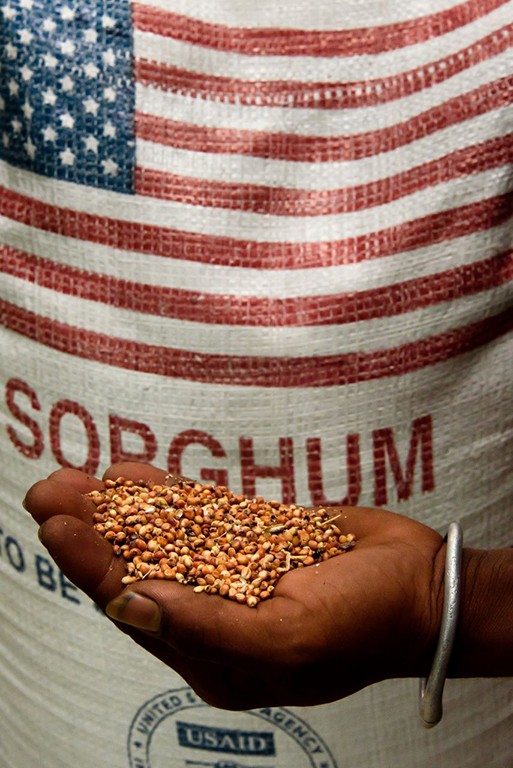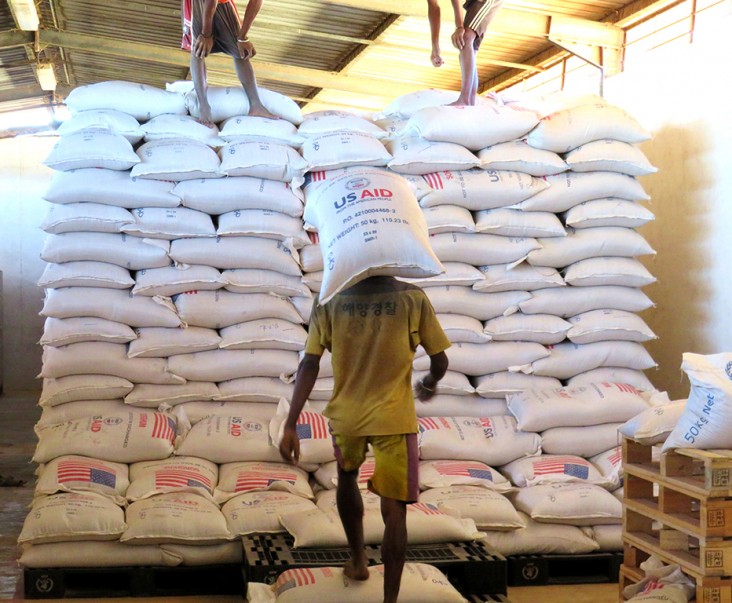Press Release Shim
Speeches Shim

350,000 people will benefit from life-saving food assistance
For Immediate Release
ANTANANARIVO — The U.S. Government is providing 8,330 metric tons (MT) of food assistance to help feed families in south and southeastern Madagascar during the upcoming lean season, which is expected to be severe.
The United States Agency for International Development (USAID) provides the funding for this food assistance, which will support the nutritional needs of over 350,000 people, including 20,500 pregnant and lactating women.
Shipments have been arriving in country since January and now all of the food supplies are available and are being readied for distribution by the World Food Programme (WFP) once the assistance is needed. These shipments are part of an $8 million food assistance program funded by USAID and delivered in Madagascar by WFP.
The food donation includes 5,910 MT of sorghum, 870 MT of yellow split peas, 660 MT of fortified rice, 520 MT of vegetable oil, and 370 MT of CSB+, a cooked blend of corn and soybeans fortified with vitamins and minerals for the treatment of malnutrition.
WFP will distribute these supplies to vulnerable households in the most affected districts of the Southern (Androy, Anosy, and Atsimo Andrefana) and the Southeastern (Atsimo Atsinanana and Vatovavy Fitovinany) regions of Madagascar. In these regions, recurrent natural disasters such as drought, cyclones, and floods have led to high rates of food insecurity and malnutrition.
17-year-old Nazisy from the district of Ambovombe is one of thousands of people who have been relying on emergency food assistance. “(Before) we ate cactus fruit or wild tubers to survive,” she says. “But even the cactus which we usually consume during difficult times was drying up in some areas. So the food assistance we received was really a relief for my little son and myself.’’
By the end of July, about a quarter of the population of Southern Madagascar - over 550,000 people - will not have enough to eat on a day-to-day basis. Ampanihy and Tsihombe districts are the most affected.
Troubling Signs Suggest a Difficult Lean Season Ahead
The food security forecast for the coming lean season, expected to begin in November, is dire.
More than 100,000 children in the six most-affected districts of southern Madagascar are expected to suffer from acute malnutrition during 2020, including more than 19,000 severe cases.
Southern Madagascar has been hit by recurrent periods of drought since 2014. After a small improvement in 2019, there was not nearly enough rain in early 2020. As a result, crops, particularly cereal and pulses, have failed, harvests are low, and many families have been forced to eat their tuber crops before they reached full maturity.
The economic disruption caused by the coronavirus pandemic is also expected to exacerbate food insecurity, as people from the south who are working in Madagascar’s big cities may face additional challenges to transfer money to family members still living in the south.


Comment
Make a general inquiry or suggest an improvement.